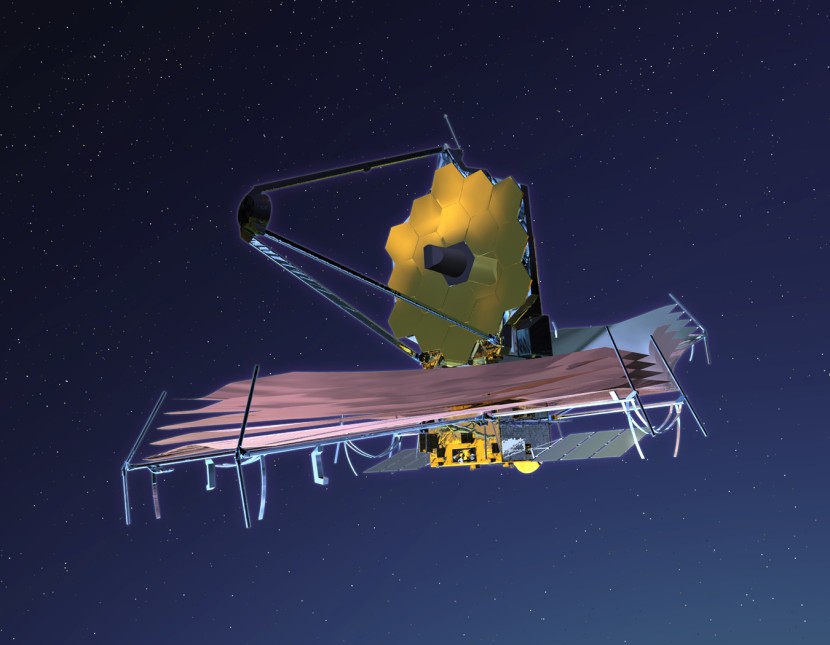
NASA released more high-resolution images captured by the James Webb Space Telescope on Tuesday that show how stars are born and the interaction of galaxies in the universe, highlighting how sophisticated the observatory is.
The new batch of photos came after President Joe Biden unveiled the first color image captured by the James Webb space telescope on Monday, regarded as a "historic moment" in human history, per The Guardian.
According to NASA's website, "Webb's image is approximately the size of a grain of sand held at arm's length, a tiny sliver of the vast universe. The combined mass of this galaxy cluster acts as a gravitational lens, magnifying more distant galaxies, including some seen when the universe was less than a billion years old."
Stunning New Photos of the Universe Revealed
One of the latest photos from the observatory is an image of the Carina Nebula, where stars are born. Located 7,600 light-years away, it is one of the largest and brightest nebulae in the sky and home to many stars more massive than our sun.
Cosmic cliffs & a sea of stars. @NASAWebb reveals baby stars in the Carina Nebula, where ultraviolet radiation and stellar winds shape colossal walls of dust and gas. https://t.co/63zxpNDi4I #UnfoldTheUniverse pic.twitter.com/dXCokBAYGQ
— NASA (@NASA) July 12, 2022
NASA said of the photo: "The "Cosmic Cliffs" are seen in the stunning new image that reveals previously concealed baby stars, which provides "a rare peek into stars in their earliest, rapid stages of formation."
Another released photo shows the James Webb space telescope's view of Stephan's Quintet, which displays how galaxies interact with one another and how such interactions could affect galactic evolution, per CNN.
✋🏼 Galactic high five!
— NASA Webb Telescope (@NASAWebb) July 12, 2022
In Webb’s image of Stephan’s Quintet, we see 5 galaxies, 4 of which interact. (The left galaxy is in the foreground!) Webb will revolutionize our knowledge of star formation & gas interactions in these galaxies: https://t.co/tlougFWg8B #UnfoldTheUniverse pic.twitter.com/b2kH1tSyMs
First identified in 1787, this compact galaxy group is 290 million light-years away in the constellation Pegasus. According to a NASA release, four of the group's five galaxies are locked in a "cosmic dance" of frequent "close encounters."
Mark McCaughrean, the senior adviser for science and exploration at the European Space Agency, said the image shows the view from our own Milky Way to far-away galaxies - even displaying the creation of new stars.
Read Also: Omicron Subvariant Surge Prompts Chinese Authorities To Mull a Potential Second Major Lockdown
According to ESA astronomer Giovanna Giardino, when the near-infrared view is stripped away from the image, the most visible are gas and dust. But it also revealed an active black hole. "We cannot see the black hole itself, but we see the material swirling around being swallowed," Giardino said.
Gas gets heated to extremely high temperatures as it folds and becomes very bright, "40 billion times the luminosity of our sun," she explained.
Another photo made public by the space agency shows the "Eight-Burst," also known as the Southern Ring Nebula, located 2,000 light-years from the Earth. The image shows an expanding gas cloud surrounding a dead star in this enormous planetary nebula.
Some stars go out with a bang. In these images of the Southern Ring planetary nebula, @NASAWebb shows a dying star cloaked by dust and layers of light. Explore this star's final performance at https://t.co/63zxpNDi4I #UnfoldTheUniverse. pic.twitter.com/dfzrpvrewQ
— NASA (@NASA) July 12, 2022
A Milestone in Astronomy
Following the release of the images on Tuesday, NASA administrator Bill Nelson said that The James Webb Space Telescope "represents the best of NASA."
He said: "It maintains our ability to propel us forward for science, for risk-taking, for inspiration. We don't want to ever stop exploring the heavens or stop daring to take another step forward for humanity."
Nelson cited astronomer Carl Sagan, stating, "'Somewhere, something incredible is waiting to be known.'"
He believes that "those words are becoming reality."
© 2025 HNGN, All rights reserved. Do not reproduce without permission.








